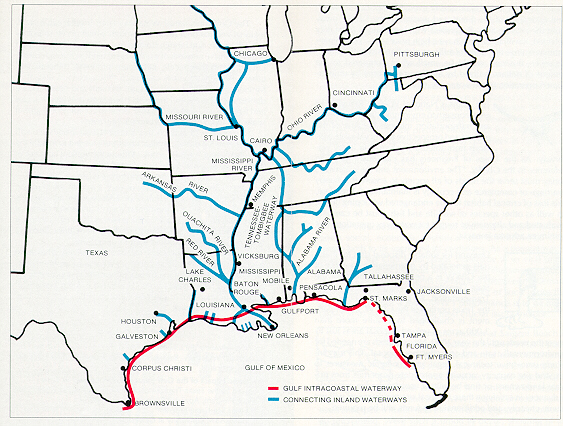American alligators are usually found in freshwater, in slow-moving
rivers. They are also found in swamps, marshes, and lakes. Sailing from Baytown, Texas to Gulfport, Mississippi, through the Intracoastal Waterway, we have anchored out in "gator country". On many occasions we have seen them along the shorelines and on the banks. Once, while anchoring, an alligator swam out to greet "Little Lara". Alligators can
tolerate salt water for only brief periods as they do not have
salt glands. The average size for an adult female alligator is 8.2
feet, while the average size male is 11.2 feet. Exceptionally
large males can reach a weight of nearly half a ton or 1,000 pounds.
The largest recorded
alligator found in Louisiana measured 19.2 ft.
 |
| Alligator along the shore |
Both males and females
have an "armored" body with a muscular flat tail. They have
four short legs; the front legs have five toes while the back legs
have four toes. Alligators have a long snout with upward facing
nostrils at the end; this lets them breathe while the rest of the
body is underwater. The young can be distinguished from adults by the
bright yellow stripes on the tail; adults have dark stripes on the
tail.
Female alligators
usually remain in a small area. The males occupy areas larger than
two square miles. Both males and females extend their ranges during
the courting and breeding season. Young alligators remain in the area
where they are hatched and where they are protected by their mother.
After two to three years, they leave that area in search of food, or
are driven out by larger alligators.
 |
| Peggy pets an alligator! |
Alligators are
carnivorous. They have very strong jaws that can crack a turtle
shell. They eat fish, snails and other invertebrates, birds, frogs,
and mammals that come to the water's edge. They use their sharp teeth
to seize and hold prey. Small prey is swallowed whole. If the prey is
large, alligator shake it apart into smaller, manageable pieces. If
it is very large, alligator bite it, then spin on the long axis of
their bodies to tear off easily swallowed pieces. Because alligators
will feed on almost anything, they pose a mild threat to humans.
Alligators are generally
timid towards humans and tend to walk or swim away if one approaches.
Dogs and other pets are also
sometimes eaten by alligators.
Alligators move on land by two forms of locomotion
referred to as "sprawl" and "high walk". The
 |
| The Alligator "High Walk" |
One interesting aspect
of alligator biology is that they undergo periods of dormancy when
the weather is cold. They excavate a depression called a “gator
hole” along a waterway and use it during dormancy. In areas where
the water level fluctuates, alligators dig themselves into hollows in
the mud, which fill with water. These tunnels are often as long as 65
feet and provide protection during extreme hot or cold weather. Many
other animals also use these burrows after they are abandoned by
their creators.
It has been reported
that there are more alligators in Louisiana than people by a factor
of ten to one.























